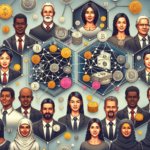Understanding Backtesting in Financial Markets
Backtesting is a fundamental practice in the world of finance where trading strategies are tested against historical data to evaluate their effectiveness. By simulating trades as if they were executed in real-time, traders and analysts can discern whether a strategy is likely to be profitable. The underlying principle is simple: if a strategy performs well in historical scenarios, it is more likely to yield positive results in the future.
The Traditional Backtesting Process
Traditionally, backtesting has involved extensive manual labor. Analysts would collect historical pricing data, manually input strategies into spreadsheets or specialized software, and analyze the outcomes. This process, while valuable, is often marred by human error and efficiency issues. The more extensive the data set, the more time-consuming the process becomes.
Furthermore, traditional methods sometimes fail to account for key factors, such as market conditions or external events that could influence trading outcomes. This is where AI steps in to enhance the backtesting landscape.
AI Technologies Transforming Backtesting
Artificial intelligence has brought a wave of transformation in various sectors, and the financial markets are no exception. By leveraging machine learning, natural language processing, and big data analytics, AI significantly enhances the backtesting process.
Automating Data Collection
One of the most time-consuming aspects of backtesting is gathering the historical data required to run tests. AI-powered tools can automate this process, quickly pulling relevant data from numerous online sources. This not only saves time but also ensures that the data is more comprehensive and reduces the likelihood of human error.
Data Cleaning and Preprocessing
After collecting historical data, it needs to be cleaned and preprocessed to ensure its accuracy and reliability. AI can streamline this process by identifying outliers, correcting discrepancies, and normalizing data formats. This enables analysts to spend less time on data integrity and more time on analyzing results.
Advanced Analytic Techniques
AI algorithms can analyze vast quantities of data in ways that were previously impossible. With machine learning techniques, backtesting can incorporate complex modeling that accounts for various market conditions and their potential impacts.
Enhanced Predictive Modeling
By utilizing historical data, machine learning models can identify intricate patterns that may not be visibly apparent to human analysts. These models can predict how a strategy would perform not just historically but under different hypothetical scenarios. This level of analysis can lead to more informed decision-making and improved strategies.
Risk Assessment and Management
AI also plays a crucial role in assessing risk. Advanced algorithms can analyze market volatility, historical drawdowns, and other risk factors to provide a comprehensive risk analysis for any trading strategy. This allows traders to adjust their strategies according to their risk appetites and financial goals.
Simulating Market Conditions
Another significant advantage AI brings to backtesting is the ability to simulate various market conditions. Traditional backtesting often relies on static historical data, which might not accurately reflect future market dynamics.
Creating Dynamic Simulations
AI can generate dynamic simulations that incorporate factors such as changing economic conditions, news events, or sudden market shifts. By using these simulations, traders can stress-test their strategies to see how they would hold up during unforeseen circumstances.
Incorporating Sentiment Analysis
With the rise of social media and online news, market sentiment has become a vital factor in trading. AI technologies utilize natural language processing to analyze sentiments derived from news articles, social media comments, and analyst reports. By integrating sentiment analysis into backtesting, traders can better understand how public sentiment might influence market movements and adjust their strategies accordingly.
Real-Time Backtesting with AI
The advent of AI also enables a shift from traditional retrospective backtesting to real-time strategies. Traders can instantly test their strategies in the live market environment, making adjustments as needed without waiting for past data review.
Continuous Learning Models
AI systems can be designed to continuously learn from new data, refining their predictions and strategies as they go. This implies that instead of being a one-time evaluation, backtesting becomes a dynamic process. With every new trade executed, the system learns and optimizes.
Adaptive Algorithms
Many AI solutions use adaptive algorithms that change based on real-time feedback. For instance, if a strategy begins to underperform, the AI can analyze the reasons and suggest modifications. This capability is particularly beneficial in fast-moving markets where conditions can shift rapidly.
Reducing Human Bias
Human analysts often approach backtesting with pre-conceived notions that can impact the outcome. Indeed, cognitive biases can lead to overfitting strategies or ignoring unfavorable historical performance. AI minimizes these biases by basing the analysis solely on data-driven outcomes.
Objective Decision-Making
AI technologies operate on objective algorithms devoid of emotional influences. This objective approach helps ensure that decision-making in backtesting remains rooted in statistical evidence rather than intuition or emotional responses.
Challenges and Considerations
While AI certainly enhances backtesting, several challenges remain. Understanding the intricacies of AI models requires expertise, and improper implementation may lead to misleading results.
The Importance of Understanding AI Limitations
Traders must recognize that AI is not foolproof. The algorithms are only as good as the data fed into them and the strategies designed by humans. Careful consideration must be taken to ensure that models remain robust and relevant.
Overfitting Risks
One significant challenge in using AI for backtesting is the risk of overfitting, where a model becomes too tailored to historical data, making it ineffective for future predictions. Developing models that generalize well beyond the historical dataset is crucial.
Integration into Existing Workflows
Effectively integrating AI technologies into existing trading workflows can also pose challenges. Firms may face resistance from traditionalists who prefer conventional methods or may lack the necessary resources to properly implement AI solutions.
Future of AI in Backtesting
As technology continues to evolve, the backtesting process is likely to become even more sophisticated. Integrating AI with other emerging technologies, such as blockchain and quantum computing, could further redefine how strategies are tested and validated.
By embracing these innovations, financial professionals can equip themselves with powerful tools to enhance their trading strategies, making informed decisions in an ever-changing financial landscape. The future is undoubtedly promising for AI in backtesting, and those willing to innovate stand to reap significant rewards in their trading endeavors.








